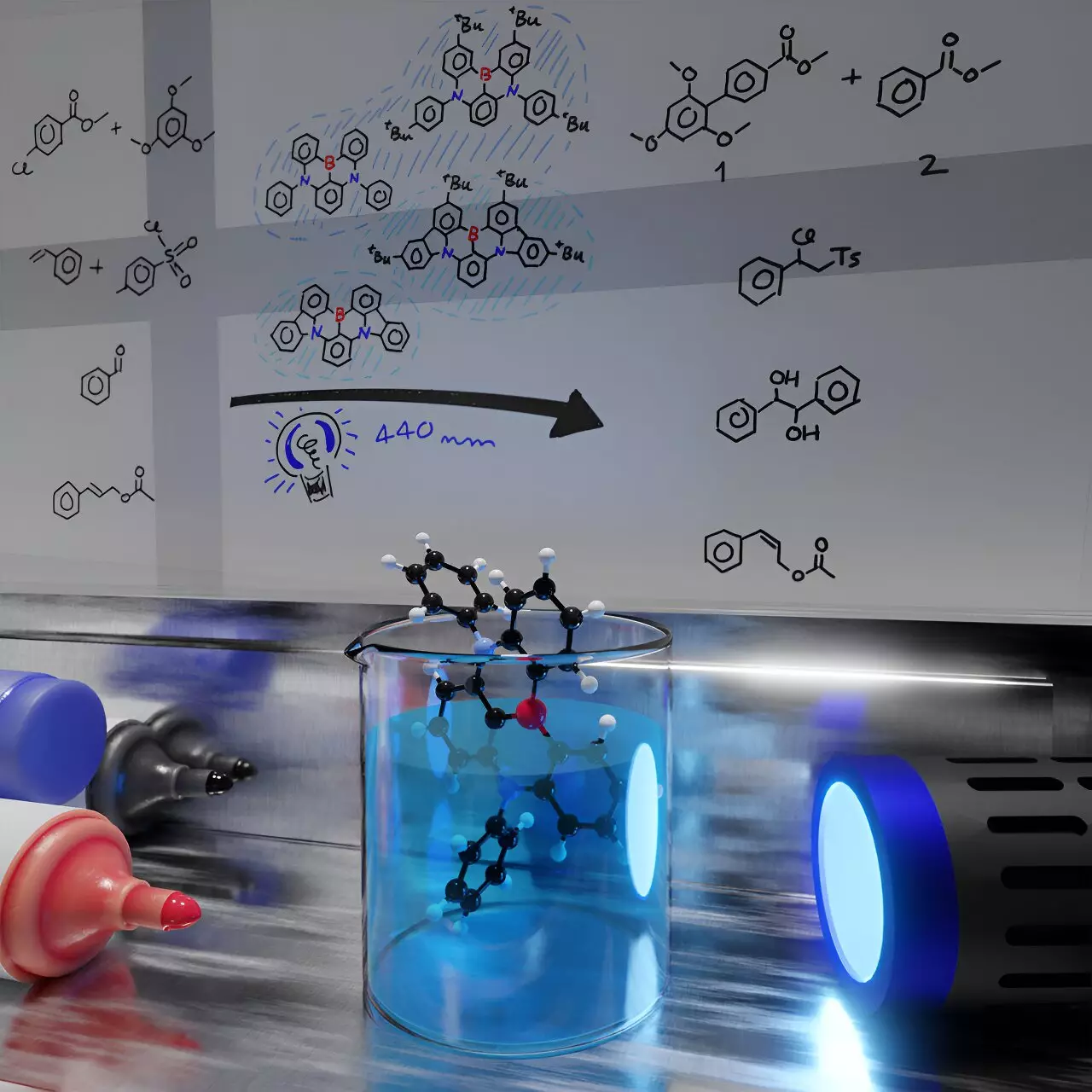

In a recent report published on July 17th, researchers from the University of St Andrews have highlighted the potential of organic compounds as viable replacements for expensive metal photocatalysts. The study, led by Professor Eli Zysman-Colman from the School of Chemistry, showcases the performance of a family of four organic compounds in various benchmark reactions, demonstrating their effectiveness as photocatalysts.
Traditional photocatalysts often contain scarce, costly, and toxic metals like ruthenium and iridium, making them unsuitable for widespread use in industries such as pharmaceuticals and agrochemicals. This limitation has fueled the search for sustainable alternatives that are both cost-effective and environmentally friendly.
Zysman-Colman and his team tested four boron- and nitrogen-containing multi-resonant thermally activated delayed fluorescence (MR-TADF) compounds in a series of reactions, assessing their performance against standard photocatalysts. The results were promising, with the organic compounds matching or even surpassing the efficiency of traditional metal-based catalysts.
The potential of these sustainable organic materials extends beyond academic research, offering practical applications in various industries. These compounds have shown strong reactivity in reactions such as pinacol coupling, dehalogenations, and E/Z isomerizations, making them attractive options for pharmaceutical and agricultural companies seeking alternative photocatalysts.
Professor Zysman-Colman’s work represents a significant step towards the development of sustainable photocatalysts for industrial use. By collaborating with academic and industry partners through initiatives like the PhotoReact Innovative Training Network, researchers aim to address the challenges associated with photocatalysis and promote the adoption of organic compounds as viable alternatives to metal-based catalysts.
Overall, the findings from this study emphasize the promising future of sustainable organic compounds as photocatalysts, paving the way for a more environmentally-friendly and cost-effective approach to catalysis in various industries.
In the world of pharmaceuticals, innovation often hinges on finding new compounds that can lead…
In the heart of the Amazon basin, drastic climate changes present an alarming reality that…
Air fryers have rapidly surged in popularity, captivating home cooks and culinary enthusiasts alike. When…
In an era where technology and social media reign, the importance of sleep often takes…
In an era where environmental consciousness is paramount, the maritime industry has long been scrutinized…
Radionuclides, often relegated to discussions surrounding nuclear energy and radioactive waste, have far-ranging implications for…
This website uses cookies.